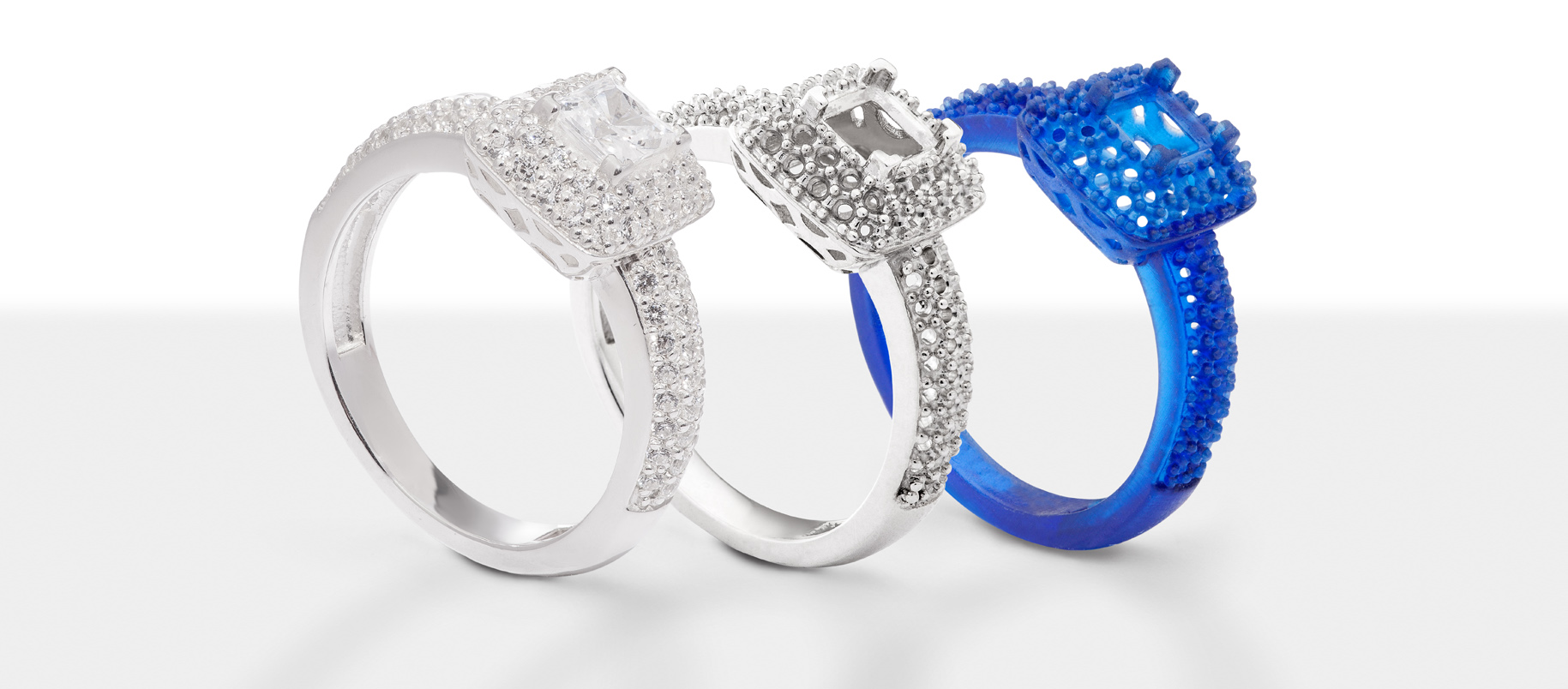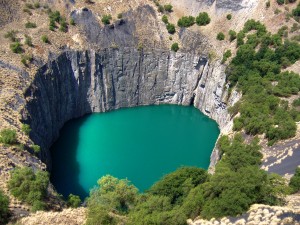
How diamonds are formed
Diamonds start their formation at the center of the earth under extremely high pressure, 4.5 to 6 gigapascal = the Eiffel Tower upside down on the tip of your finger, and temperature of between 900 and 1300 °C. It’s a pure coincidence they make it to the earth’s surface in the first place, mostly because of volcanic eruptions. Their journey to the surface is not without its perils. Diamonds burn up in magma, so it is essential to insulate rough diamonds inside a piece of kimberlitic rock to make it all the way up.
The creation of colored diamonds begin when the carbon comes into contact with other materials during the formation phase, boron = blue, nitrogen = yellow, radioactive radiation = green. 1.8% of all diamonds are brightly colored and are called ‘Fancy Colors’. Red diamonds are extremely rare and their value can be 100 times the value of a colorless diamond. Sometimes you need to mine up to 100 tons of rock to find a one-carat diamond, 0,2 g. Most diamond mines are old volcanic craters. One of those craters, ‘The Big Hole’ in South Africa, is the deepest man-made hole on the planet. Diamonds are also mined in rivers, the ocean or on the coast.
Antwerp World Diamond Centre
Antwerp World Diamond Centre is a private foundation that represents the collective interests of the Belgian diamond sector. It seeks to develop Antwerp’s position as world center for diamonds and to improve the image of the sector among the general public. In charge of these activities stands firmly a Diamond office, place where all diamonds that pass through Antwerp make a stop. In addition, AWDC offers a whole range of services to the sector, including marketing campaigns, conferences, fairs and economic missions.
Both rough and cut diamonds arrive in Brussels airport and continue their journey to Antwerp - a task that exclusively specialized transport companies handle. Because of the great value of their cargo, transports are accompanied by a police escort. A diamond is always insured, from the moment it leaves the owner’s hand until it is claimed by its new owner. Malca Amit is a good example of a trustful transport company: they only deal with diamonds and jewelry.
When you’re strolling around the diamond quarter, you’ll notice the abundance of security cameras. Everyone passing through the neighborhood is being filmed. Safety and trust are extremely important for this part of the city. Although the so-called “Diamond Square Mile” is just a few blocks wide, it has its own police station operating 24/7. Following a bombing in 1981, bombproof garbage cans, retractable bollards and cameras were installed.
The office buildings might give off a grey, even desolate impression but you can be sure there’s a lot of buying and selling going on behind the closed doors of the offices and bourses. Getting into the buildings isn’t easy: most visitors need to present a form of identification and pass through a metal detector.
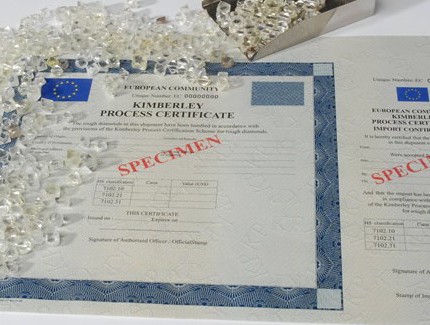
Conflict diamonds
Conflict diamonds, also called ‘blood diamonds’ are illegally sourced diamonds and are sold to fund rebel organizations or civil wars. In order to curb the trade in such diamonds, the UN General Assembly passed a resolution in 2003 which launched an international self-regulatory mechanism. A diamond producing country needs to supply a unique and secure certificate for every batch of diamonds. Every recipient sends part of the certificate back to the dispatching country and a new certificate is then drawn up. This allows us to follow the exact route of the diamonds. It is a common practice to impound a rough diamond, if checks show that it lacks a Kimberley certificate. Antwerp is a birthplace of more than than half of the world’s Kimberley certificates. Over a ten-year period, the proportion of conflict diamonds fell from 15% to 0.2%.
Trading Diamonds in Antwerp
If you want to trade in diamonds in Antwerp, you have to hold a position of a registered diamond merchant. Only members of the four events can trade in diamonds in the exhibition halls. Traders who existing members nominated formerly and those who commit to the strict rules of the bourse can count on a membership. Antwerp is home to 4 of the 30 diamond exchanges in the world. No other city is home to this many diamond bourses.
The rules of the oldest exchange, the Antwerp Diamond Club, were the model for all other diamond bourses. Of all the diamonds for trade in the ‘Vrije Diamanthandel’ and the 'Antwerp Diamond Bourse' majority of traded diamonds are cut diamonds. The ‘Antwerpsche Diamantkring’ specializes in rough and industrial diamonds.
Inside the buildings of the Antwerp World Diamond Centre, you’ll find a Tender Facility, where smaller mining companies can safely sell their diamonds.When the ‘tender’ is complete, the stones belong to the highest bidder. Bids are placed in a sealed envelope.
In order to purchase large amounts of rough or cut diamonds, diamond traders and companies need large, fast credit options. They can get those from specialized banks like ABN-AMRO, ICICI, State Bank of India and Union Bank of India. These ‘diamond banks’ also play an important part in anti-fraud legislation.
In the diamond industry, cash transactions are illegal. The limit is up to 3,000 euros, provided this accounts for only 10% of the total amount. Handling all the transactions through a bank is a necessity.
This way, it is possible to easily check everything.
The Art of Diamond Cutting
The laser is the biggest innovation in the diamond industry so far. Splitting or sawing by hand is nearly non existent. Modern laser equipment allows you to scan, saw and cut with extreme precision in just one setup. Part of the process happens automatically, but a diamond can never be completely finished by machines. Part of it is always needs a touch of a hand. Innovation is not replacing craftsmanship, but it does help to trace synthetic and artificially colored diamonds, make brilliant cuts more perfectly round or make a cutting machine line up with perfect accuracy. This allows graders and cutters to work with complete precision.
It is in ‘WTOCD’ in Lier, near Antwerp that all these new techniques develop. That’s why Antwerp is not just the trade leader, but also the leader in innovation within the diamond industry.Before a diamond can be cut, the stone must be properly examined to ensure maximum profitability.
With the help of a laser or by using a saw, it is possible to remove superfluous elements of the stone or to split the stone into smaller parts. Only then can the diamond cutter start. The time needed to cut a diamond depends on the shape, size and structure of the stone. Cutting a small diamond can take a few hours. A bigger or more complex diamond can take up a few weeks or even months. Many Antwerp cutters have their specialized ways to complete these more complex tasks. Many Antwerp diamond-cutting ateliers also develop their unique cutting shapes. For security reasons, most diamond-cutting ateliers will not allow large group visits.
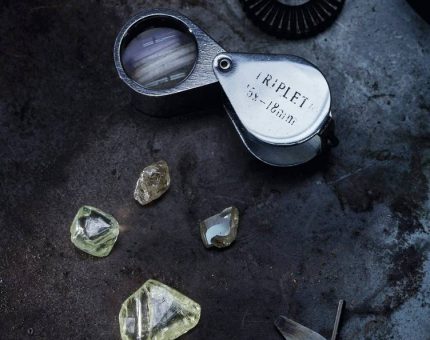
Heat, friction and tension can cause damage during the diamond cutting process. Every cutter has his or her own tricks to cool down a stone. Some even use nasal drops. If anything goes wrong during cutting, it’s never the cutter who’s responsible. The owner of a stone always takes responsibility.A cutter will never reveal the names of his clients. It’s all very confidential. Antwerp cutters often specialize in big, complex diamonds. It goes without saying that the big jewelry brands Tiffany, Chopard, Boucheron and Cartier rely on Antwerp’s expertise and discretion.
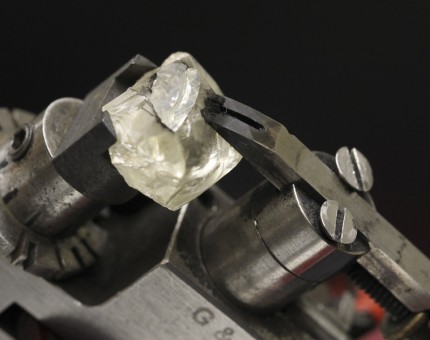
90% of all colorless diamonds are brilliant-cut: round with 57 facets. Aside from the brilliant cut, the most popular diamond shapes are the ‘Marquise’, the ‘Heart’, the ‘Baguette’ and the ‘Pear’.Diamonds attracts grease and repels water, so you can’t clean diamonds with water very well. That’s why in order to clean a diamond you have to boil it in a sulfuric acid bath after cutting. This way, you can remove all the remaining grease and the brilliance and fire of a cut diamond achieves its full potential. It’s the brilliance of a diamond that makes it ‘come alive’, as they say in the industry.
The Craft of Jewelry Design
For centuries, jewelry design was passing roughly the same process. It consisted of a jewel drawn by hand an followed by a mock-up creation using wax techniques. If the mock-up was approved, the jewel was poured in the definitive material.These days, a designer will start by making a digital drawing and then make a 3D mock-up. Then it is possible to print in wax and cast. Some jewelers still prefer doing everything by hand. Thanks to its many jewelry courses, you’ll find a very diverse offering of jewelry in Antwerp.
